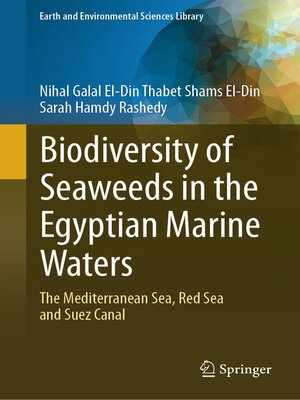Biodiversity of Seaweeds in the Egyptian Marine Waters
ebook ∣ The Mediterranean Sea, Red Sea and Suez Canal · Earth and Environmental Sciences Library
By Nihal Galal El-Din Thabet Shams El-Din

Sign up to save your library
With an OverDrive account, you can save your favorite libraries for at-a-glance information about availability. Find out more about OverDrive accounts.
Find this title in Libby, the library reading app by OverDrive.



Search for a digital library with this title
Title found at these libraries:
| Library Name | Distance |
|---|---|
| Loading... |
The Arab Republic of Egypt enjoys a vital strategic location. Its northern border is the Mediterranean Sea, and its eastern border is the Red Sea, which give it a special significance from the bio-diversity point of view as a coastal zone, and as a sensitively diversified ecosystem. The shoreline of the Arab Republic of Egypt is about 3,000 km long. It is about 1,150 km long on the Mediterranean and about 1,850 km long on the Red Sea, which are connected by the Suez Canal, which is about 193.30 km in length. The three water masses are different ecologically and are experiencing wide range of pressures due to, eutrophication, coastal development, aquaculture and climate change. These conditions resulted in several species of seaweeds that adapt to these pressures and expand their living boundaries while others may fade away. Accordingly, the study of seaweeds biodiversity in the Egyptian marine waters is of great concern globally and constitutes an important element of global changeresearch.
The present book entitled Biodiversity of Seaweeds in the Egyptian Marine Waters summarizes our current understanding of the biodiversity of seaweeds in the Egyptian marine waters. It is a timely publication based wholly on primary data which were collected through extensive field studies conducted over the years covering the marine Egyptian waters and culminate the efforts of the Egyptian phycologists. The book contains high-quality images of some species in their existing habitats. This book gains critical importance from the fact that the Egyptian marine environment is witnessing rapid development, which will no doubt have a bearing on the coastal environment – and the baseline data on seaweed biodiversity would be useful to understand changes that may arise from physical changes in the environment as also pollution load and climate change.







